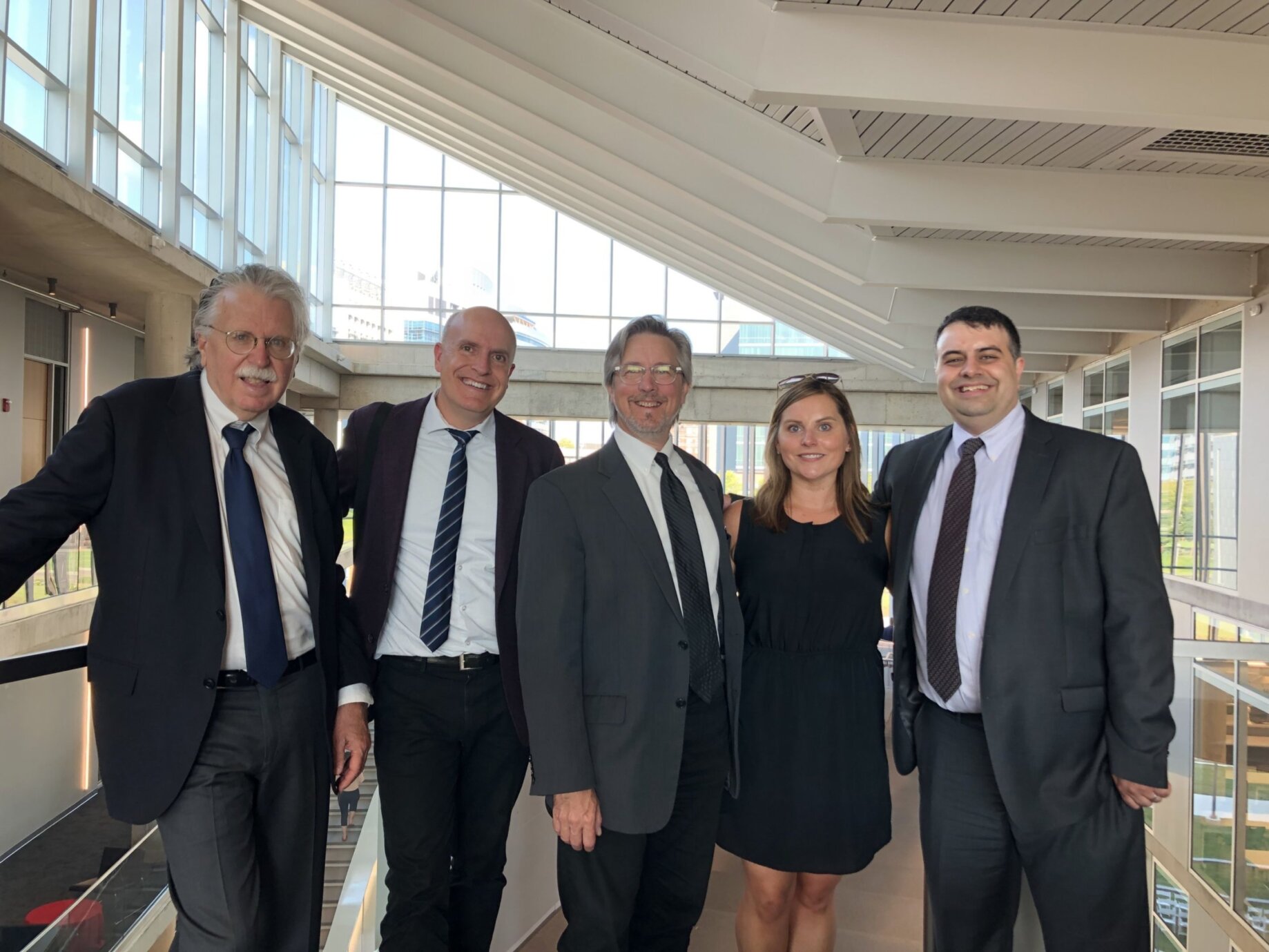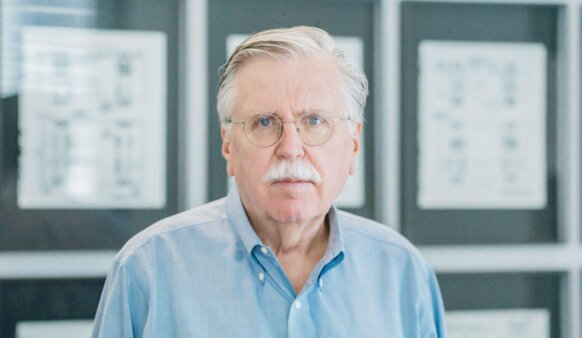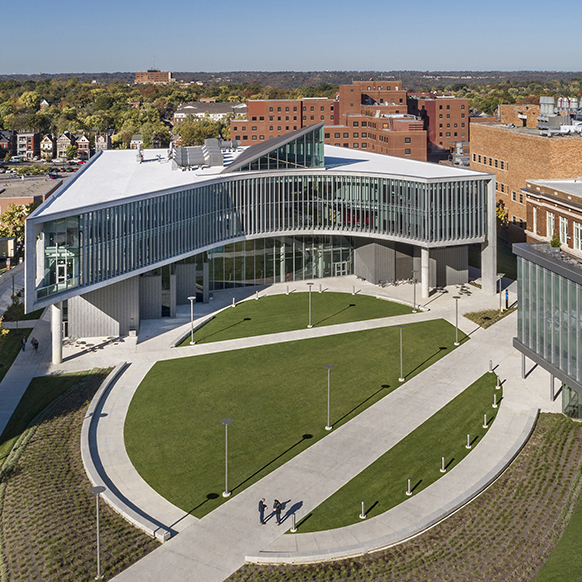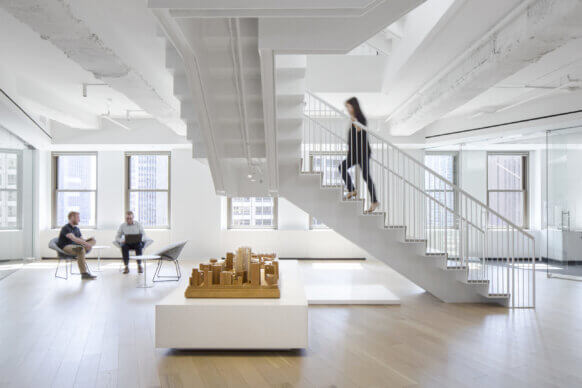As demand increases for the University of Cincinnati’s programs in allied health sciences, students and faculty had outgrown their space, often using makeshift study areas in hallways and struggling to find places for group work. The old buildings were scattered across campus and did not support the collaborative approach to learning that today’s health sciences field demands. The new Health Sciences Building brings this department together under one roof to create interdisciplinary connections. 1,200 students and 130 faculty and staff now learn and teach in an architecturally stunning facility that encourages engagement: the centerpiece for a new, connected health campus. Set back from the street to create connections with other campus buildings, the crescent-shaped building where classrooms and balconies overlook a three-story atrium provides a functional learning environment on the cohesive medical quad.
Announcements
September 12, 2019
Collaboration and Community at the University of Cincinnati’s New Health Sciences Building
Ribbon Cutting Opens a New Home for the College of Allied Health Sciences
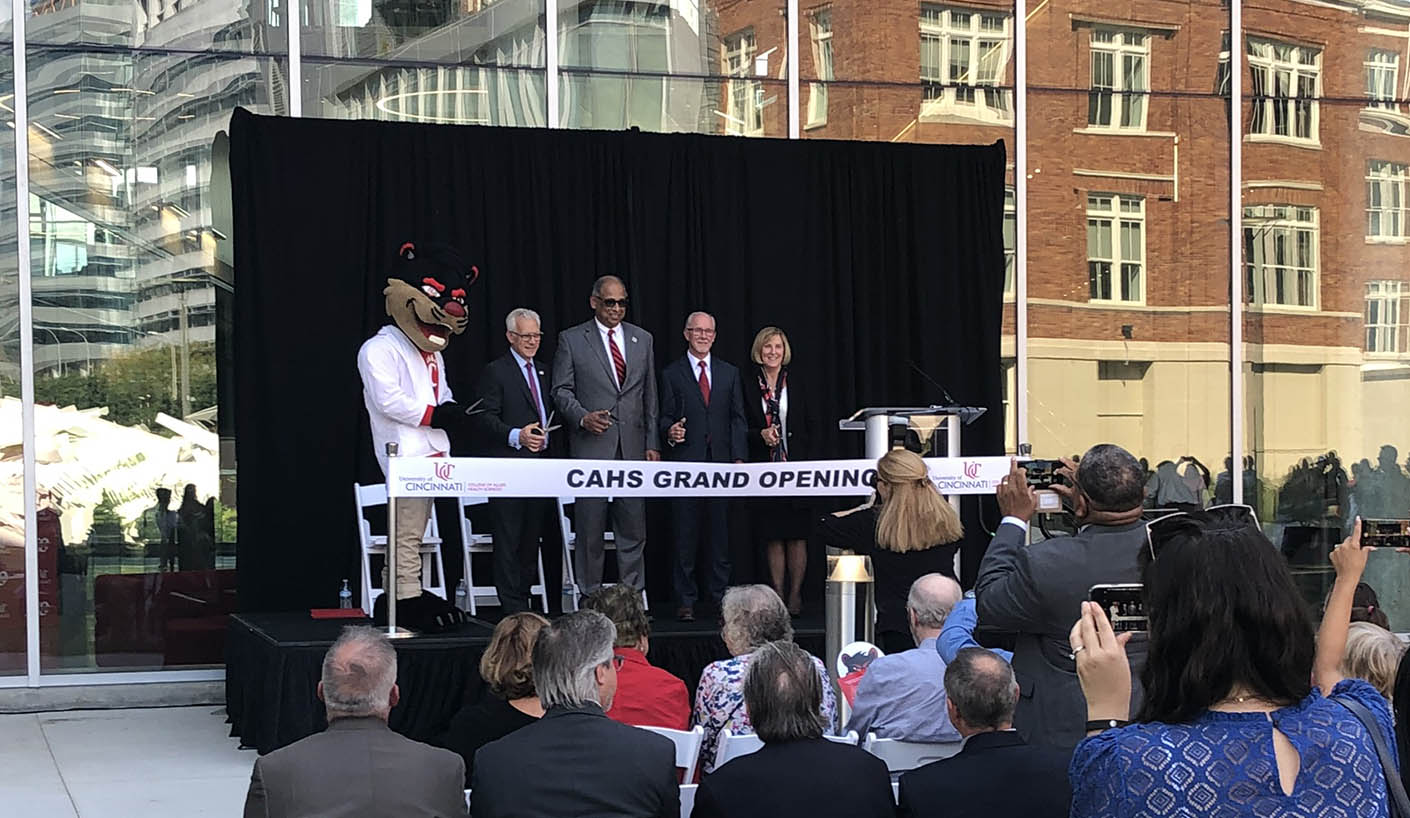
Stakeholders and administrators gather for the opening event.
